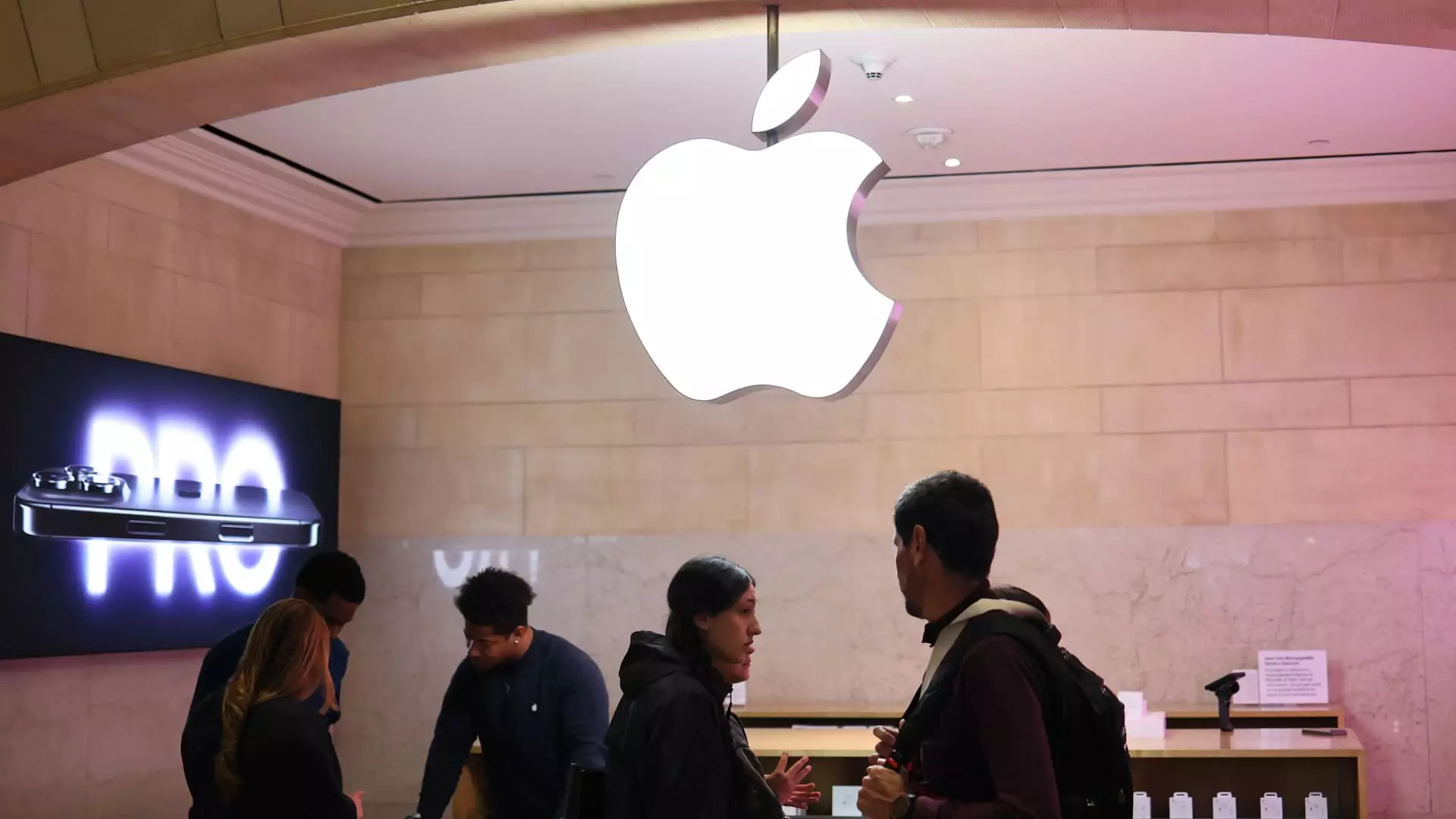As President Trump’s administration continues to wield the tariff hammer with reckless abandon, American companies, particularly tech giants like Apple, could face crashing waves that threaten their stability and innovation. According to insights from Wedbush Securities analyst Dan Ives, Apple’s future appears increasingly bleak, primarily due to its overwhelming reliance on Chinese manufacturing. The imposition of steep tariffs doesn’t just represent economic policy; it symbolizes an unsettling shift that threatens to affect the landscape of American consumer technology, and Apple stands on the frontline of this unfolding crisis.
Ives, who maintains a long-term optimistic view of Apple, has nonetheless slashed his 12-month price target from $325 to $250, signaling a 23% downward adjustment. This reduction is, in his words, a reflection of the “tariff economic Armageddon” that jeopardizes one of the most iconic brands in America. With 90% of iPhones being assembled in China, Apple is effectively a barometer for the adverse effects of tariffs. The ramifications for consumers—mainly higher prices and limited access to cutting-edge technology—are alarming and indicate a deep-seated flaw in American economic strategy.
The Reality of Rising Prices
One of the most jarring aspects of this potential upheaval is the anticipated increase in prices. Imagine walking into an Apple store and facing a staggering price hike on iPhones—an upsurge so severe that middle-class consumers are priced out of owning a device that has become a necessity. Ives outlines that the average price point for iPhones could soar dramatically, pushing them beyond the reach of everyday Americans. If Apple matched the cost impositions inflicted by tariffs, we could see iPhones surpassing the $1,200 mark, shaking consumer confidence and undermining Apple’s near-cult status as a consumer brand.
This situation sparks an unsettling realization: the luxury of Apple products, often perceived as essential tools for modern life, may be turning into forbidden fruit for substantial segments of the American public. The economic model relies heavily on accessibility; when consumers are faced with daunting pricing, demand dwindles, leading to a catastrophic downward spiral, not just for Apple but for the tech industry as a whole.
A Supply Chain in Peril
The nightmare doesn’t stop with consumer pricing; the intricate web of supply chains faces disruption that experts suggest could set technology back by a decade. With massive investments earmarked for shifting production back to the United States, analysts estimate that merely relocating a fraction of Apple’s supply chain may take upwards of three years and cost around $30 billion—tremendous investments that many smaller firms simply can’t afford.
It’s an uphill battle fraught with logistical challenges, regulatory hurdles, and unforeseen costs that could detract from innovation—the lifeblood of tech companies. The fear lies in the long-term impact this disruption could have not only on Apple’s renowned product quality but also on the rich ecosystem fostered by its app economy and other service offerings. The “supply chain upside down” phrase echoes ominously, reminding us how easily stability can unravel when burdened by punitive tariffs.
The Broader Implications for American Values and Innovation
America prides itself on being a leader in innovation and consumer choice; however, current policies threaten not just Apple but the very fabric of our tech-driven existence. By slapping tariffs on imports and engaging in trade wars, the government disproportionately punishes consumers and companies striving for advancement. What does this mean for the future of American ingenuity?
There are underlying implications of this trade war that suggest a fundamental misunderstanding of globalization and the benefits of shared economies. Apple has thrived in a globally interconnected market and represents the potential that arises from international collaboration. As we watch these punitive measures unfold, it’s evident that the result could spell disaster for not just Apple, but the ideals of competition, aspiration, and ultimately, an American Dream predicated on progress and new possibilities.
The specter of economic downfall looms large, reminding us that corporate giants like Apple can only thrive when they operate in a conducive regulatory environment—one free from self-imposed shackles that limit growth, innovation, and access. How long can the U.S. maintain its leading role on the global stage if we continue to alienate the very companies that define its economic prowess?


Leave a Reply